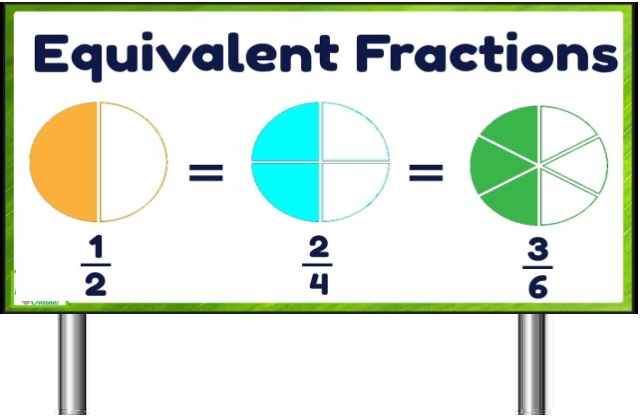New Reduced ICSE Class-10 Chemistry Syllabus 2021 Exam of Council. The council has trim the syllabus 25% of original syllabus. Chapter-Wise List of New Reduced Syllabus of ICSE Class-10 Chemistry is given below.

New Reduced ICSE Class-10 Chemistry Syllabus 2021
There will be one paper of two hours duration of 80 marks and Internal Assessment of practical work carrying 20 marks. The paper will be divided into two sections,
Section I (40 marks) and Section II (40 marks).
Section I (compulsory) will contain short answer questions on the entire syllabus.
Section II will contain six questions. Candidates will be required to answer any four of these six questions.
Note: All chemical process/reactions should be studied with reference to the reactants, products, conditions, observation, the (balanced) equations and diagrams.
1. Periodic Properties and variations of Properties – Physical and Chemical.
(i) Periodic properties and their variations in groups and periods. Definitions and trends of the following periodic properties in groups and periods should be studied:
• atomic size
• metallic character
• non-metallic character
• ionisation potential
• electron affinity
• electronegativity
(ii) Periodicity on the basis of atomic number for elements.
• The study of modern periodic table up to period 3 (students to be exposed to the
complete modern periodic table but no questions will be asked on elements beyond period 3 – Argon);
• Periodicity and other related properties to be explained on the basis of nuclear Charge and shells (not orbitals).
(Special reference to the alkali metals and halogen
2. Chemical Bonding
Electrovalent, covalent and co-ordinate bonding, structures of various compounds,Electron dot structure.
(a) Electrovalent bonding:
• Electron dot structure of Electrovalent compounds NaCl, MgCl2, CaO.
• Characteristic properties of electrovalent compounds – state of existence, melting and boiling points, conductivity (heat and electricity), dissociation in solution and in molten state to be linked with electrolysis.
(b) Covalent Bonding:
• Electron dot structure of covalent molecules on the basis of duplet and octet of electrons example: hydrogen, chlorine, nitrogen, ammonia, carbon tetrachloride, methane.
• Polar Covalent compounds – based on difference in electronegativity:
Examples – HCl and H2O including structures.
• Characteristic properties of Covalent compounds – state of existence, melting and boiling points, conductivity (heat and electricity), ionisation in solution. Comparison of Electrovalent and Covalent compounds.
(c) Coordinate Bonding:
• Definition
• The lone pair effect of the oxygen atom of the water molecule and the nitrogen atom of the ammonia molecule to explain the formation of H3O+ and OHions in water and NH4 + ion. The meaning of lone pair; the formation of hydronium ion and ammonium ion must be explained with help of electron dot diagrams
3. Study of Acids, Bases and Salts
(i) Simple definitions in terms of the molecules and their characteristic properties. (ii) Ions present in mineral acids, alkalis and salts and their solutions; use of litmus and pH paper to test for acidity and alkalinity
• Examples with equation for the ionisation/dissociation of ions of acids, bases and salts.
• Acids form hydronium ions (only positive ions) which turn blue litmusred, alkalis form hydroxyl ions (only negative ions) with water which turns red litmus blue.
• Salts are formed by partial or complete replacement of the hydrogen ion of an acid by a metal. (To be explained with suitable examples).
• Introduction to pH scale to test for acidity, neutrality and alkalinity by using pH paper or Universal indicator.
(iii) Definition of salt; types of salts.
Types of salts: normal salts, acid salt, basic salt, definition and examples.
(iv) Action of dilute acids on salts.
Decomposition of hydrogen carbonates, carbonates, sulphites and sulphides by appropriate acids with heating if necessary. (Relevant laboratory work must be done).
4. Analytical Chemistry
(i) Action of Ammonium Hydroxide and Sodium Hydroxide on solution of salts: colour of salt and its solution; formation and colour of hydroxide precipitated for solutions of salts of Ca, Fe, Cu, Zn and Pb; special action of ammonium hydroxide on solutions of copper salt and sodium hydroxide on ammonium salts.
On solution of salts:
• Colour of salt and its solution.
• Action on addition of Sodium Hydroxide to solution of Ca, Fe, Cu, Zn, and Pb salts drop by drop in excess. Formation and colour of hydroxide precipitated to be highlighted with the help of
equations.
• Action on addition of Ammonium Hydroxide to solution of Ca, Fe, Cu, Zn, and Pb salts drop by drop in excess. Formation and colour of hydroxide precipitated to be highlighted with the help of equations.
• Special action of Ammonium Hydroxide on solutions of copper salts and sodium hydroxide on ammonium salts.
(ii) Action of alkalis (NaOH, KOH) on certain metals, their oxides and hydroxides. The metals must include aluminium, zinc and lead, their oxides and hydroxides, which react with caustic alkalis (NaOH, KOH), showing the amphoteric nature of these substances.
5. Mole Concept and Stoichiometry
Vapour Density and its relation to relative molecular mass.
• Molecular mass = 2×vapour density (formal proof not required)
• Deduction of simple (empirical) and molecular formula from:
(a) the percentage composition of a compound.
(b) the masses of combining elements.
6. Electrolysis
(i) Electrolytes and non-electrolytes. Definitions and examples.
(ii) Substances containing molecules only, ions only, both molecules and ions.
• Substances containing molecules only ions only, both molecules and ions.
• Examples; relating their composition with their behaviour as strong and weak electrolytes as well as non-electrolytes.
(iii) Definition and explanation of electrolysis, electrolyte, electrode, anode, cathode, anion,
cation, oxidation and reduction (on the basis of loss and gain of electrons).
(iv)An elementary study of the migration of ions, with reference to the factors influencing selective discharge of ions (reference should be made to the activity series as indicating the tendency of metals,
e.g. Na, Mg, Fe, Cu, to form ions) illustrated by the electrolysis of:
• Molten lead bromide
• acidified water with platinum electrodes
• Aqueous copper (II) sulphate with copper electrodes; electron transfer at the electrodes.
The above electrolytic processes can be studied in terms of electrolyte used, electrodes used, ionization reaction, anode reaction, cathode reaction, use of selective discharge theory, wherever applicable
(v) Applications of electrolysis:
• Electroplating with nickel and silver, choice of electrolyte for electroplating.
• Electro refining of copper; Reasons and conditions for electroplating; names of the electrolytes
and the electrodes used should be given. Equations for the reactions at the electrodes should be given for electroplating, refining of copper.
7. Metallurgy
(i) Occurrence of metals in nature.
• Mineral and ore – meaning only.
• Common ores of aluminium.
(ii) Extraction of Aluminium.
(a) Chemical method for purifying bauxite by using NaOH – Baeyer’s Process.
(b) Electrolytic extraction – Hall Heroult’s process:
Structure of electrolytic cell – the various components as part of the electrolyte, electrodes and electrode reactions. Description of the changes occurring, purpose of the substances used and the main reactions with their equations.
(iii) Alloys – composition and uses Stainless steel, duralumin, brass, bronze, fuse metal / solder
8. Study of Compounds
A. Hydrogen Chloride
Hydrogen chloride: preparation of hydrogen chloride from sodium chloride; refer to the density and solubility of hydrogen chloride (fountain experiment); reaction with ammonia; acidic Properties of its solution.
• Preparation of hydrogen chloride from sodium chloride; the laboratory method of preparation can be learnt in terms of reactants, product, condition, equation, diagram or setting of the apparatus, procedure, observation, precaution, collection of the gas and identification.
• Simple experiment to show the density of the gas (Hydrogen Chloride) – heavier than air.
• Solubility of hydrogen chloride (fountain experiment); setting of the apparatus, procedure, observation, inference.
• Method of preparation of hydrochloric acid by dissolving the gas in water- the special arrangement and the mechanism by which the back suction is avoided should be learnt.
• Reaction with ammonia
• Acidic properties of its solution – reaction with metals, their oxides, hydroxides and carbonates to give their chlorides; decomposition of carbonates, hydrogen carbonates, sulphides, sulphites.
• Precipitation reactions with silver nitrate solution and lead nitrate solution.
B. Ammonia
Ammonia: its laboratory preparation from ammonium chloride and collection; ammonia from nitrides like Mg3 N2 and AlN and ammonium salts. Manufacture by Haber’s Process; density and solubility of ammonia (fountain experiment); aqueous solution of ammonia; its reactions with
hydrogen chloride and with hot copper (II) oxide and chlorine; the burning of ammonia
in oxygen; uses of ammonia.
• Laboratory preparation from ammonium chloride and collection; (the preparation to be studied in terms of, setting of the apparatus and diagram, procedure, observation, collection and
identification)
• Ammonia from nitrides like Mg3N2 and AlN using warm water. Ammonia from ammonium salts using alkalies.The reactions to be studied in terms of reactants, products, conditions and equations.
• Manufacture by Haber’s Process.
• Density and solubility of ammonia (fountain experiment).
• The burning of ammonia in oxygen.
• The catalytic oxidation of ammonia (with conditions and reaction)
• Its reactions with hydrogen chloride and with hot copper (II) oxide and chlorine (both chlorine in excess and ammonia in excess)
All these reactions may be studied in terms of reactants, products, conditions, equations and observations.
• Aqueous solution of ammonia – reaction with sulphuric acid, nitric acid, hydrochloric acid and solutions of iron(III) chloride, iron(II) sulphate, lead nitrate, zinc nitrate and copper sulphate.
• Uses of ammonia – manufacture of fertilizers, explosives, nitric acid, refrigerant gas (Chlorofluro carbon – and its suitable alternatives which are nonozone depleting), and cleansing agents
C. Nitric Acid
Nitric Acid: one laboratory method of preparation of nitric acid from potassium nitrate or sodium nitrate. Large scale preparation. Nitric acid as an oxidizing agent.
• Laboratory preparation of nitric acid from potassium nitrate or sodium nitrate; the laboratory method to be studied in terms of reactants, products, conditions, equations, setting up of apparatus, diagram, precautions, collection and identification.
• Manufacture of Nitric acid by Ostwald’s process (Only equations with conditions where applicable).
• As an oxidising agent: its reaction with copper, carbon, sulphur.
D. Sulphuric Acid
Large scale preparation, its behaviour as an acid when dilute, as an oxidizing agent when
concentrated – oxidation of carbon and sulphur; as a dehydrating agent – dehydration of sugar and copper (II) sulphate crystals; its non-volatile nature.
• Manufacture by Contact Process Equations with conditions where applicable).
• Its behaviour as an acid when dilute – reaction with metal, metal oxide, metal hydroxide, metal carbonate, metal bicarbonate, metal sulphite, metal sulphide.
• Concentrated sulphuric acid as an oxidizing agent – the oxidation of carbon and sulphur.
• Concentrated sulphuric acid as a dehydrating agent- (a) the dehydration of sugar (b) Copper (II) sulphate crystals.
• Non-volatile nature of sulphuric acid – reaction with sodium or potassium chloride and sodium or potassium nitrate.
9. Organic Chemistry
(i) Introduction to Organic compounds.
• Unique nature of Carbon atom – tetra valency, catenation.
• Formation of single, double and triple bonds, straight chain, branched chain, cyclic compounds (only benzene).
(ii) Structure and Isomerism.
• Structure of compounds with single, double and triple bonds.
• Structural formulae of hydrocarbons. Structural formula must be given for: alkanes, alkenes, alkynes up to 5 carbon atoms.
• Isomerism – structural (chain, position)
(iii) Homologous series –
characteristics with examples. Alkane, alkene, alkyne series and their
gradation in properties and the relationship with the molecular mass or molecular formula.
(iv) Simple nomenclature.
Simple nomenclature – of the hydrocarbons with simple functional groups – (double bond, triple bond, alcoholic, aldehydic, carboxylic group) longest chain rule and
smallest number for functional groups rule – trivial and IUPAC names (compounds with only one functional group) (v) Hydrocarbons: alkanes, alkenes, alkynes.
• Alkanes – general formula; methane (greenhouse gas) and ethane – methods of preparation from sodium ethanoate (sodium acetate), sodium propanoate (sodium propionate), from
iodomethane (methyl iodide) and bromoethane (ethyl bromide). Complete combustion of methane and ethane, reaction of methane and ethane with chlorine through substitution.
• Alkenes – (unsaturated hydrocarbons with a double bond); ethene as an example. Methods of preparation of ethene by dehydro halogenation reaction and dehydration reactions.
• Alkynes -(unsaturated hydrocarbons with a triple bond); ethyne as an example of alkyne; Methods of preparation from calcium carbide and 1,2 dibromoethane ethylene dibromide).




